Ophidians, Scaled Faith
Ophidians, also known as the serpentkin are a race of humanoids related to snakes. It is believed they were born when The Scaled Empress took pity upon her favorite creature, and allowed some to gain the sapience of humanoids as well as some of their traits so they may better revere her.
Nagas have a long-standing enmity with the Ophidian, with each race seeing itself as the epitome of serpentine evolution. Nagas see the Ophidian in contempt, privileged as they are by the mother of all snakes. They believe they did not earn the right to sentience while they still struggle to be seen as more than mere monsters.
Basic Information
Anatomy
Ophidians resemble enormous snakes with shoulders, arms, and a torso that resembles a humanoid form. They typically hold their heads and torsos off the ground while moving, but they can increase their speed by lowering their bodies and using their hands for extra propulsion. They adorn their torsos with armor, jewelry, and a vague nod toward the clothing worn by other races.
The appearance of Ophidians varied greatly, but all have serpentine features. Scale colors are usually simple greens and browns, but more elaborate swirls, stripes, or diamond patterns were possible, even in blues and reds.
Ophidians give off almost no scent that a human could detect, but animals could sense a dry, musty odor from their bodies.
Ecology and Habitats
Female Ophidians lay eggs in brood chambers, marking each clutch with its parentage, then abandoning them to the care of broodguards. Hatchlings are hatched from these eggs, which are always curious and eager to explore, and will seek food immediately, even eating each other if sustenance is not at hand. Their initial training is provided by broodguards, which also monitor the hatchery. Young ones are trained in the use of their powers almost immediately after being born. They will turn into tiny vipers and slither to the nearest cover when they see danger or hear a warning.
Often elders grow lazy when they reach great age, sleeping or lying in torpor for longer and longer periods - first for days, then weeks, then seasons at a time, and finally years upon years. At last, they fail to wake at all.
Additional Information
Geographic Origin and Distribution
Originating from the southern fork of Laëril they tend to stay within forests where the familiar climate allows them to thrive. However some seperate from their tribes to explore the wider world of Aurora, and can be found within large settlements of the Dragon Ridge.
Average Intelligence
Boasting higher average intelligence than most sentient species, their excell at taking advantage of their environment to their advantage and are expert trap makers. This has allowed them to remain mostly uncontested within their territories. Those who leave the confort of the tribes often use this intelligence to their advantage to survive within society, be it through lawfulness or trickery.
Civilization and Culture
History
1. The Blessing of Loxotl
The Ophidians, a serpentine race native to the southern groves of Läeril, owe their intelligence and prominence to Loxotl, the Scaled Empress, a divine serpentine deity revered for her wisdom, cunning, and mastery over the natural world. In ancient times, Loxotl selected the Ophidians from among many serpent-like creatures, imbuing them with higher intelligence and the ability to coordinate and thrive as a society. This divine favor set them apart from their kin, such as the Nagas, sparking a cultural transformation that shaped the future of their race.
The Ophidians viewed their transformation as a sacred gift, believing themselves to be chosen guardians of the Empress’s will, and began to revere Loxotl as both a creator and protector. Guided by her teachings, they developed a highly organized and disciplined society, focused on their role as caretakers of the forests they called home. Their intelligence and connection to Loxotl granted them a natural affinity for magic, particularly illusion-based magic, which they use to protect their sacred groves from intruders.
2. The Rise of the Ophidians and Naga Hostility
As the Ophidians expanded their domain throughout the southern forests, they encountered other serpentine beings—most notably the Nagas. Unlike the Ophidians, the Nagas had struggled for years to earn Loxotl's blessing, crawling through the earth and undergoing grueling trials to prove themselves worthy. When they saw the Ophidians, who had been granted intelligence and coordination seemingly without effort, the Nagas were filled with resentment.
This perceived favoritism became the root of a bitter rivalry. The Nagas viewed the Ophidians as an insult to their hard-earned progress and believed their existence undermined the sacrifices they had made to attain what little favor they had earned. This resentment quickly turned into open hostility, and the Nagas began to hunt the Ophidians on sight. However, the Nagas were no match for the well-organized, coordinated might of the Ophidians, who drove them from the forests in a series of brutal conflicts.
The Ophidians emerged victorious, establishing themselves as undisputed rulers of the southern groves. They continued to thrive under the protection of Loxotl, while the Nagas retreated, their hatred festering as they licked their wounds in exile. Over time, the Ophidians solidified their dominance, pushing further into the surrounding forests and ensuring that few dared challenge their control of the region.
3. Isolation and the "Monster Territory" Reputation
For centuries, the Ophidians remained isolated in their forest domain, fiercely protective of their territory. Their lands became a place of legend, feared by outsiders who spoke of the Ophidians as monstrous, snake-like creatures capable of magical feats and ruthless attacks on trespassers. The southern groves developed a reputation as "monster territory," where even the bravest of explorers dared not venture.
This isolation was deliberate. The Ophidians saw themselves as the chosen people of Loxotl, and they believed that interacting with outsiders would corrupt their sacred duty to protect the forests. They enforced a strict policy of exclusion, chasing away anyone who attempted to enter their lands, whether they came with peaceful intentions or not. Over time, the groves became overgrown with ancient trees and enchanted flora, forming a natural barrier that deterred even the most determined intruders.
4. The First Contact with Outsiders
Despite their isolationist tendencies, change came to the Ophidians in the form of a single, fateful meeting. A curious Ophidian, driven by a desire to learn more about the world beyond the forest, encountered an adventurous outsider who had managed to penetrate the forest's magical defenses. This meeting was not one of violence, but of curiosity and mutual interest. For the first time in centuries, an Ophidian saw the world through the eyes of an outsider, and the outsider experienced the mysteries of the Ophidian world.
This encounter proved to be the catalyst for further contact with the outside world. While many Ophidians still held to their isolationist beliefs, others grew curious about the broader world and began to leave the forests, exploring the lands beyond their traditional territory. Some sought knowledge, others adventure, but all were driven by a desire to understand more about their place in the world and how it connected to Loxotl’s greater plan.
5. Integration with Outsider Societies
As more Ophidians ventured beyond their forests, they began to integrate into the wider world. While their serpentine appearance and mysterious origins often led to distrust and fear, the Ophidians proved to be valuable members of society. Their natural affinity for magic, particularly in the areas of herbalism, survival, and illusion-based spells, made them sought-after scholars, and advisors.
This integration was not without challenges. Many Ophidians struggled to adapt to the complexities of life outside their carefully ordered society. Their strict adherence to the teachings of Loxotl often clashed with the more flexible and pragmatic approaches of outsiders. However, over time, the Ophidians found a balance, bringing their own unique culture and knowledge to the cities and towns they settled in.
The presence of the Ophidians also began to shift the perception of their homeland. What was once seen as a territory of monsters slowly transformed into a place of mystery and ancient knowledge, where only the bravest or wisest could tread. Adventurers and scholars alike became intrigued by the forests, seeking to uncover the secrets hidden within.
6. Modern Day Ophidian Society
In the present day, the Ophidians remain guardians of the southern groves, though they are no longer as isolated as they once were. Their society is divided between those who remain in the forests, upholding the ancient traditions and worship of Loxotl, and those who have integrated into the wider world, bringing their unique skills and perspectives with them. These Ophidians continue to revere the Scaled Empress, even as they navigate the complexities of outsider societies.
Some Ophidians have become ambassadors and diplomats, representing their people in dealings with other nations. Others have taken on roles as scholars, sharing their knowledge of the natural order and magic with those willing to learn. Despite their integration, the Ophidians remain proud of their heritage and maintain a deep connection to the forests they once ruled alone. They continue to see themselves as the chosen of Loxotl, destined to uphold her teachings in a world that is ever-changing.
Scientific Name
Ophidia Sapiens
Lifespan
Ophidians mature at the same rate as humans and have lifespans similar in length to theirs.
Geographic Distribution



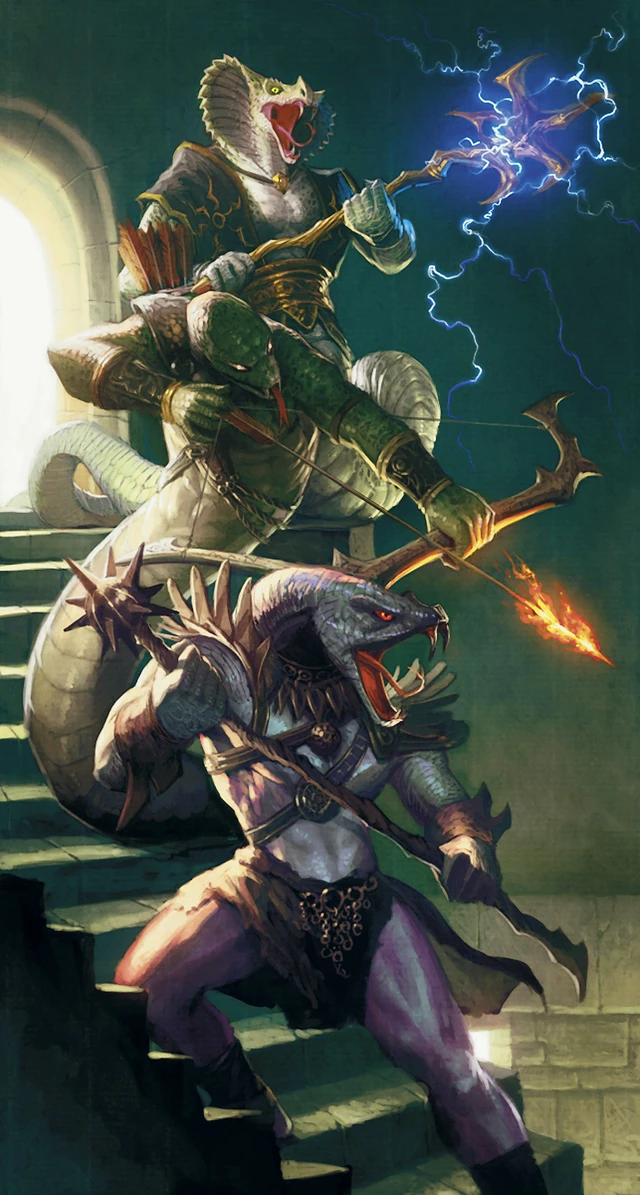
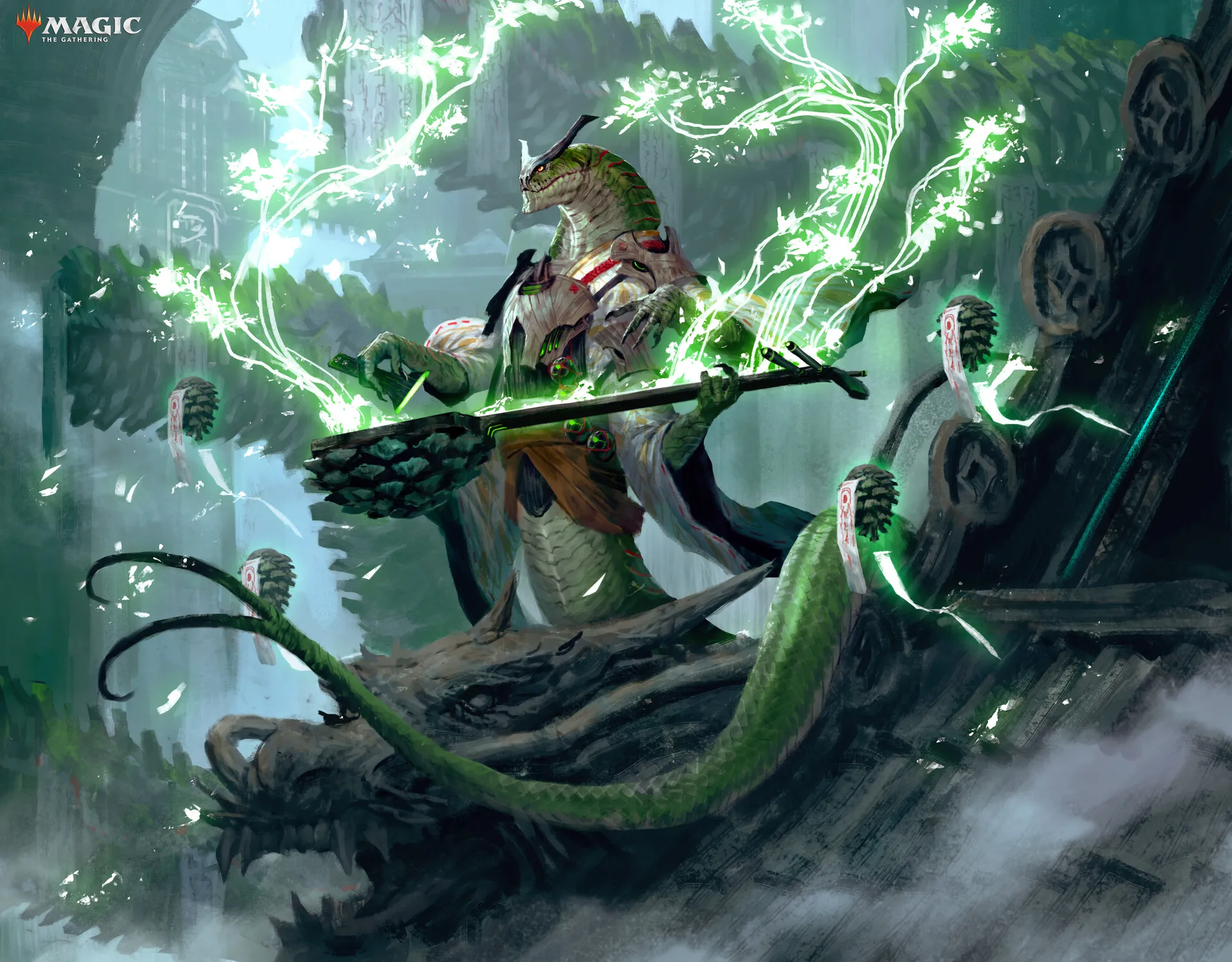
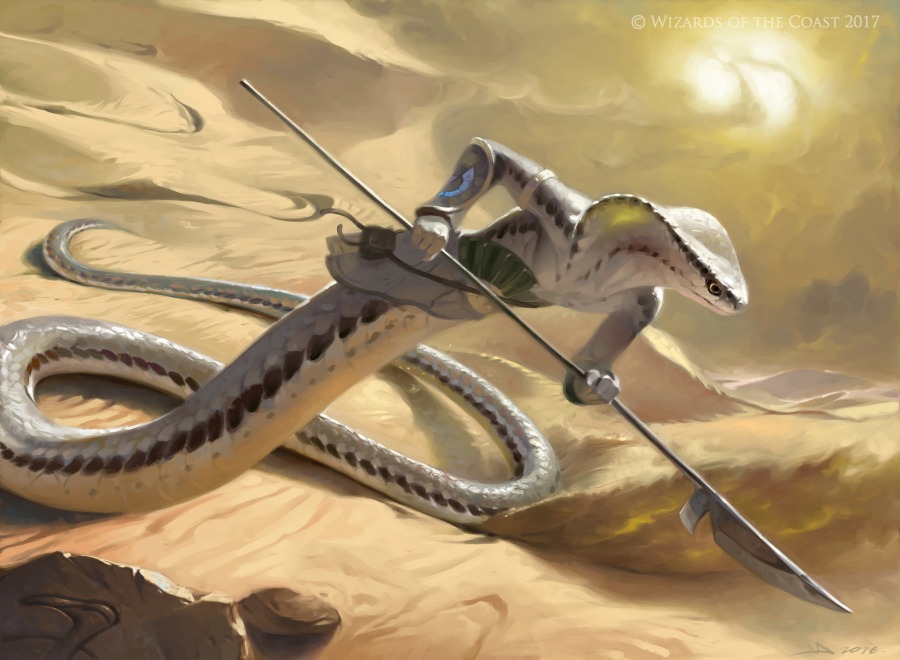
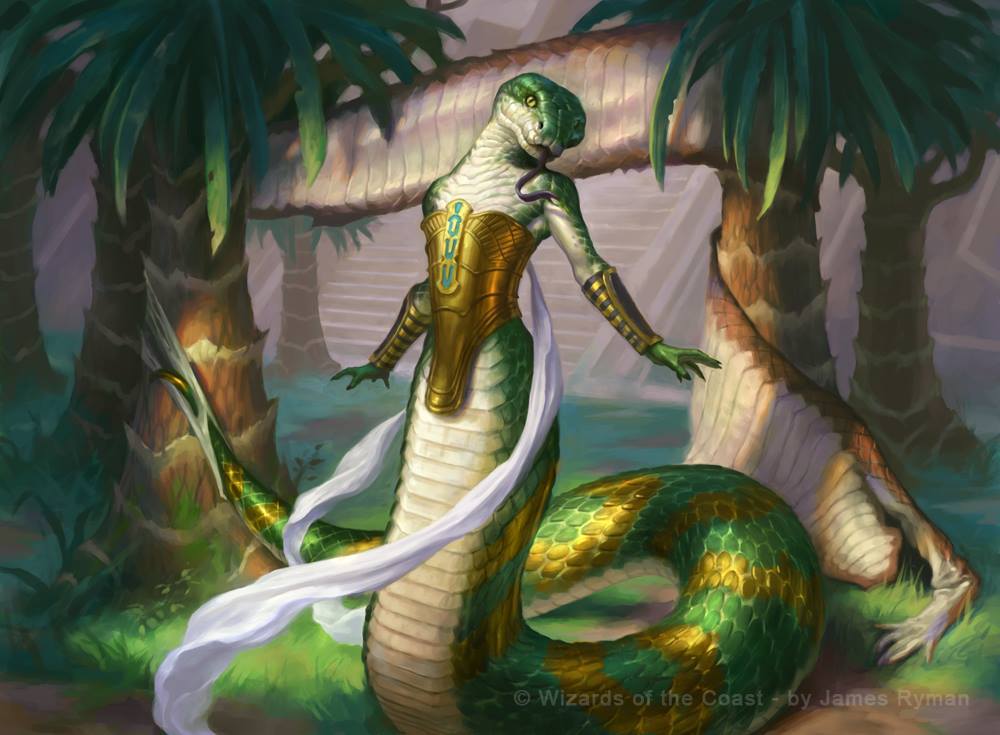
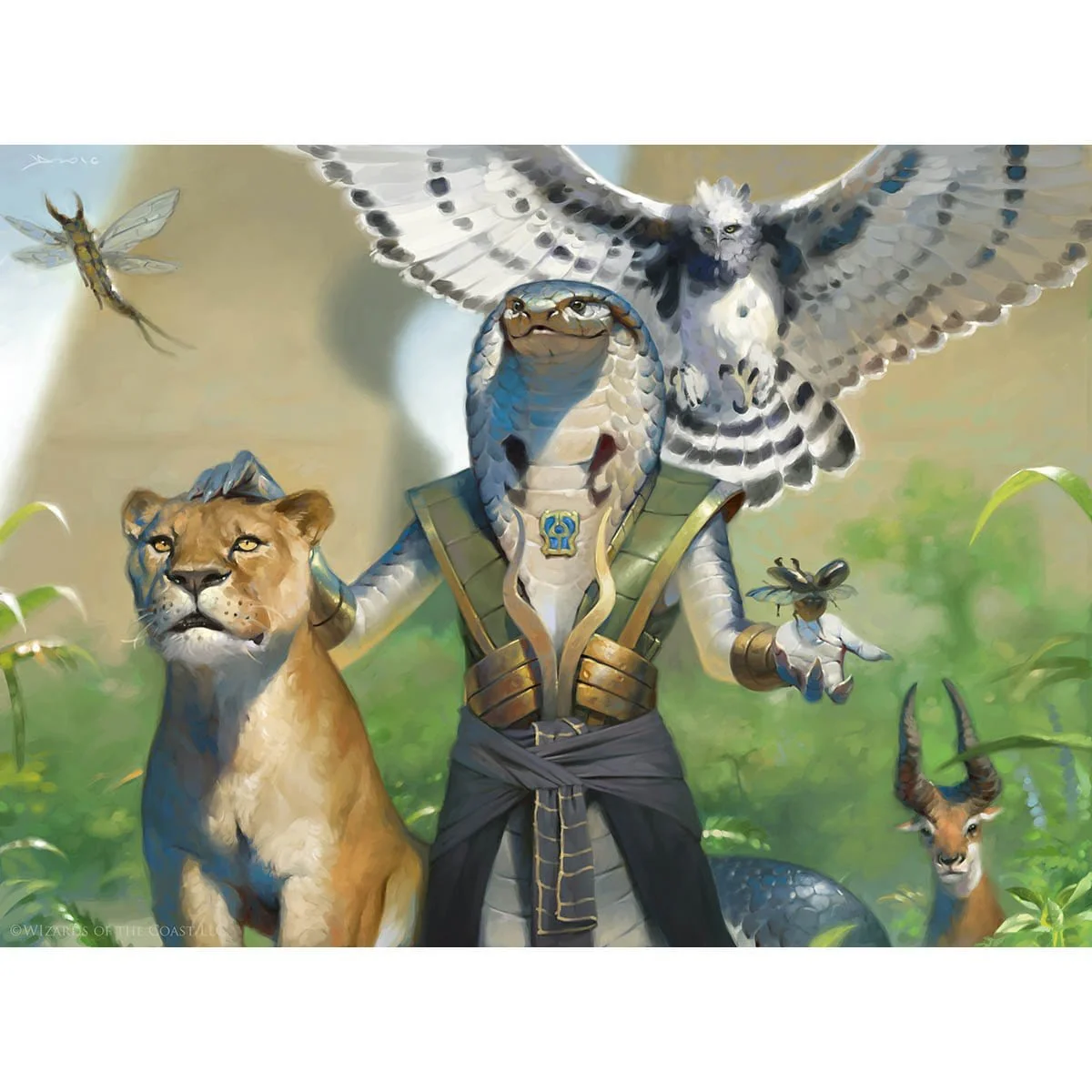
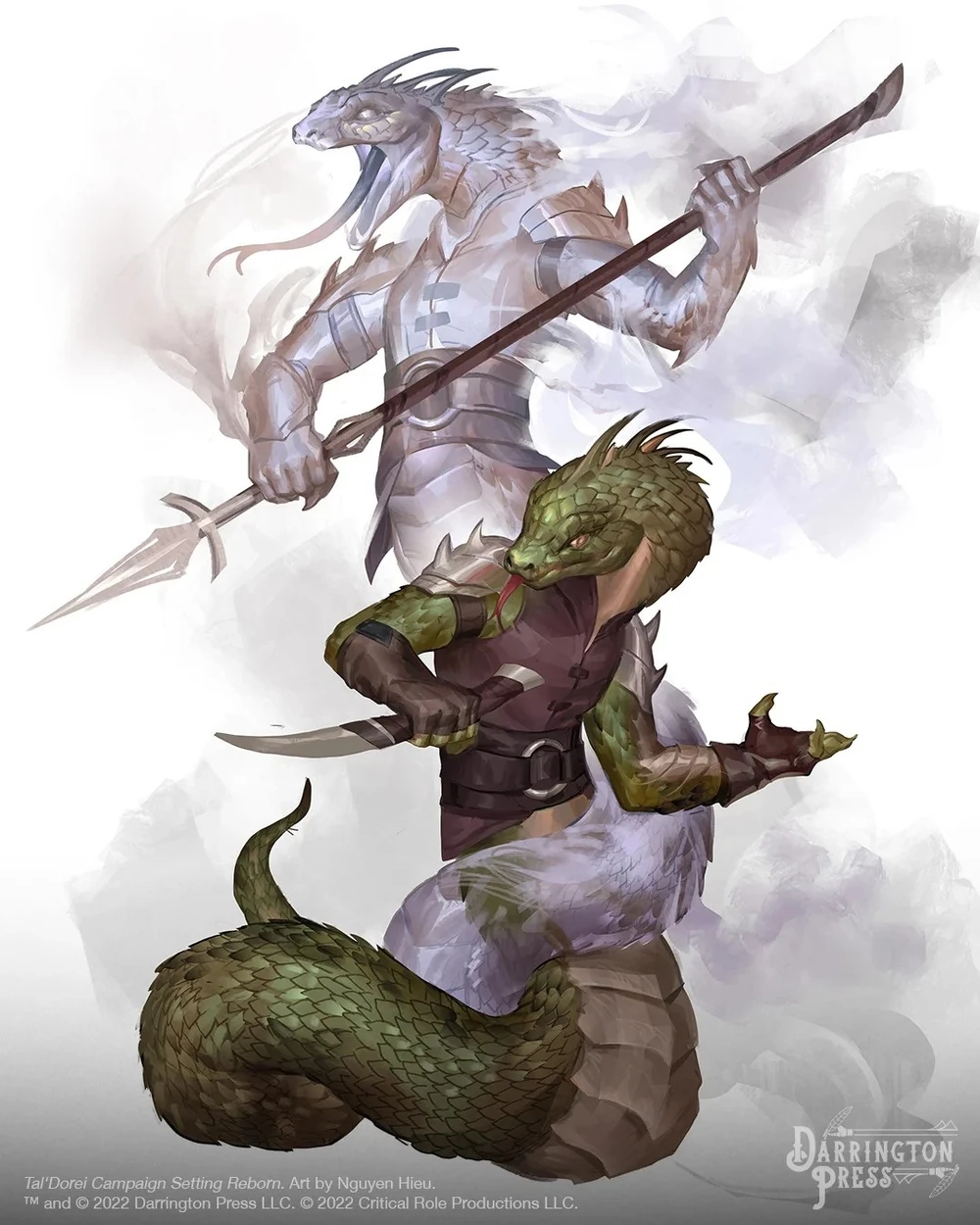
Comments